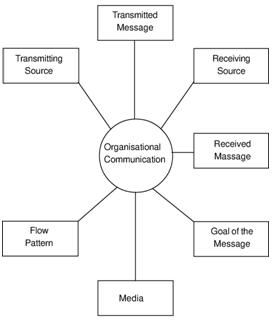Organisational Communication:
In recent years, communication has attracted increasing attention. A few innovative and successful practices have been evolved. For instance, in BHEL (Bhopal Unit), Management-Employee Communication Meetings (MECOMs) have been efficiently used. A MECOM is an open forum, in that more than 700 persons participate. It has contributed positively to mutual sharing of information and concerns and better understanding among management and employees. MECOM has helped in effectual implementation of decisions. Therefore, establishing this system has not been simple; a lot of work was completed prior to and during the evolution of MECOM.
In TISCO, the Chairman keeps communication with his employees through answering every letter which is addressed to him (some 80,000 a year!) and holds an open house at his residence between 7 a.m. and 9 a.m. every day where anyone could walk in and discuss personal or work-related problems.
He also holds "dialogues" along with large groups, sometimes of 2500 persons. The most systematic attention to communication has probably been paid in VST Industries, involving regular business-related communication with the Union, with great benefits.
Organisational communication might be described as the process of the flow (transmission and reception) of goal-oriented messages among sources, in a pattern and through a medium or media.
An additional element in organisational communication (not present in interpersonal communication) is the flow pattern of messages. Therefore, there are seven elements in organisational communication - the transmitting source; the receiving source (the target); the transmitted message; the received message; the goal of the message; the medium or media; and the flow pattern (which is called network). The transmitting and receiving sources are the people sending and receiving the message, respectively.

Figure: Elements in Organisational Communication